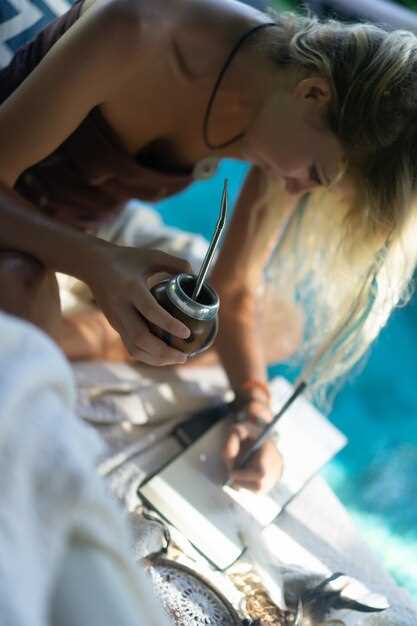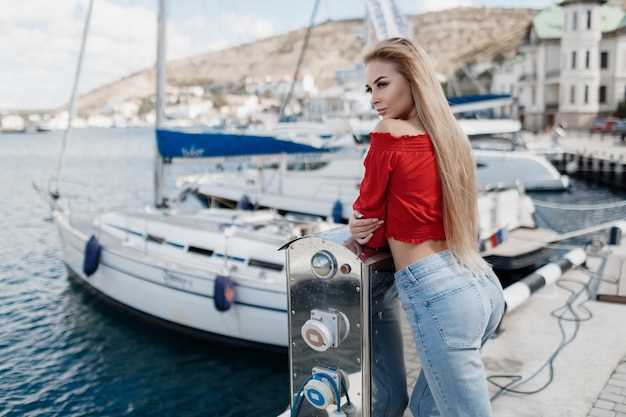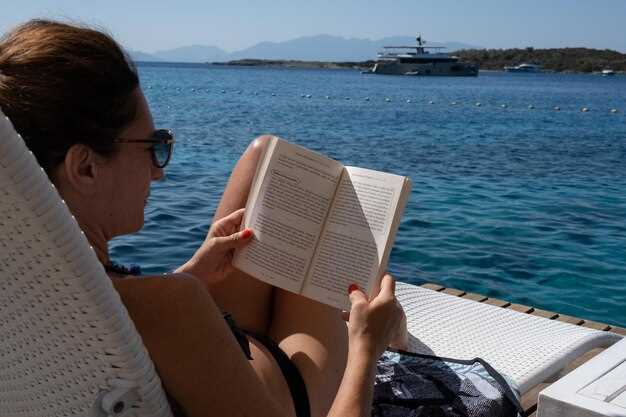Recommendation: Charter a 7‑day west Sicily itinerary for practically cruising, taking advantage of a favorable forecast and the ponente breeze. The 島々 are located off Sicily’s north coast, and the loop can include canna, Panarea, Stromboli, Vulcano, Salina, Filicudi, and Alicudi, with swimming stops and opportunities to discover white beaches and clear water between sheltered anchorages.
Plan each day with 3–5 hours of cruising, anchor near a protected cove, and reserve afternoons for swimming, shore visits, and a lighthouse detour that marks a safe harbor. Follow safety protocols, check mooring availability, and adjust between islands if the wind shifts.
Fleet and planning: Choose operators with modern boats, clear safety records, and flexible itineraries; italycharter options often include Lipari‑based boats and allow you to sail between their best anchorages. The canna stop adds a quiet, traffic-free mooring and easy snorkeling just offshore.
For a balanced loop, start from Lipari and push westward toward Vulcano and Panarea, then turn to Stromboli for a sunset view, before heading south to Salina, Filicudi, and Alicudi, finishing near canna or Lipari. Always check the forecast before a long leg and allow time for a late return to the marina. The wind on the west coast of the islands is often steadier in the afternoon, aiding cruising.
Pack snorkeling gear, a solid chart kit, and a flexible plan for dockside mooring; keep your crew informed about the plan and use a local skipper if new to Aeolian waters. A careful approach to anchorages and a short anchor review after each stop improves safety.
Aeolian Islands Yacht Charter Series
Start with a 7-day Lipari–Alicudi loop that visits Lipari, Vulcano, Panarea, Stromboli, Salina, Filicudi, and Alicudi; this route allows you to discover crystal bays and stunning coastlines, keeps daily legs short, and makes dockage predictable.
Prices vary by season and island; dockage rates depend on yacht size and stay length. Their crews are ready to handle provisioning, berthing, and buoy management, so you can focus on the scenery.
Walk from Lipari’s harbor to the cathedral and through the old town, then stroll along the mouth of a sheltered inlet to reach a waterfront restaurant with panoramic sea views. The islands offer tiny lanes, beaches, and a blend of rugged cliffs and sheltered coves that reward a walk ashore, including a special sunset at Panarea.
Scuba divers will enjoy crystal water around Panarea and Filicudi, with tiny caves and abundant marine life. Faraglione rock stacks rise dramatically from the sea, and you can cruise between anchorages using a buoy so others have space.
On Saturday, Panarea’s buzz pairs with quiet harbors elsewhere, making the last leg to Alicudi a tranquil finish. Some anchorages are easily reached by short tender rides. Ready crews manage dockage and fuel stops, and their guidance helps you reach each island with confidence as you discover more of the archipelago.
7-Day Route Overview: Lipari to Stromboli and back (day-by-day milestones)

Day 1: Depart Lipari and head toward Salina along the eastern coasts, keeping the front of the boat toward the wind for a smooth cruise. The short, practical leg covers roughly 9 nm, a number that helps you plan a relaxed arrival at Porto Santa Maria or Santa Maria Bay. anchor behind Salina’s small corners and explore the island’s attractions, including quiet fishing coves and volcanic landscapes. If winds shift, drop a sheltered anchor in a bay and simply reset for the afternoon, enjoying Salina’s landscapes and sunsets.
Day 2: From Salina, cruise to Panarea to admire the stacks and rocky fronts that define its southern shoreline. The passage is straightforward and easily done, about 7–12 nm depending on the chosen course. Anchor near Cala Junco or the marina front, then stroll to the colorful lanes of Panarea town and sample local cuisine. For a panoramic moment, watch the sun dip behind the eastern coasts and capture memorable sunsets against the islands’ rugged rocks.
Day 3: Depart Panarea and set course for Stromboli, riding the southward swell toward Stromboli’s volcanic front. The voyage spans roughly 15–20 nm and gives you a clear view of strombolicchio to the north if conditions allow. Approach Stromboli’s side with caution and plan a quiet berth in a sheltered nook. As the day closes, enjoy the first sunset over the lava-strewn shores and the glow of minor thermal plumes lighting up the horizon.
Day 4: Explore Stromboli itself, with options to circle the crater-active coast and, if permitted, observe the volcanic activity from safe distances. Use the morning to sail around strombolicchio for dramatic rock formations and sea stacks, then tuck into a sheltered anchorage on the south or eastern flank. The island offers attractions from volcanic beaches to simple village strolls; in the late afternoon, catch a stunning sunset over the rocks and small harbors, then retreat to shelter as winds shift.
Day 5: Return from Stromboli toward Salina, choosing a route that keeps you along the eastern traces of the archipelago. Stop for a restful lunch near the Porto area of Salina or anchor in a protected cove to consider fuel needs for the next leg. The itinerary lends itself to a relaxed afternoon of swimming and shore visits, with opportunities to photograph Salina’s whitewashed corners as the sun sinks toward the sea.
Day 6: Cruise again toward Lipari, tracing the eastern coasts and keeping to areas where the sea stays calm in small seas. The distance back is manageable, and you should have time to explore Lipari’s wharffront, its stacks of basalt and volcanic rocks, and the nearby salt pans that give a unique scent to the air. Sunsets on the western side are a highlight; simply pause to take in the glow and the shelter offered by Lipari’s volcanic cliffs.
Day 7: Finish in Lipari, with a final morning sail along the south shoreline and a quick check of fuel levels. Dock at the old porto and stroll the front of town, where shops and cafes spill onto the quay. If you have a late departure window, linger for one last sunset over the water, reflecting on an itinerary whose rhythm balanced islands, rocks, and unforgettable experiences across the eastern and southern aisles of the Aeolian archipelago.
Anchorages and Moorings: best harbors on Lipari, Vulcano, Salina, Panarea, Stromboli, Filicudi, Alicudi
Begin with Lipari’s Marina di Lipari for reliable moorings and easy ashore access, then consider Canneto for a calmer anchorage just outside the town’s heart. From there, plan a loop that respects ponente winds and keeps you close to natural bays and historic sites.
-
Lipari
- Marina di Lipari – primary nautical hub with protected berths, water and fuel on request, and quick access to the town center. Depths typically suit med and larger boats, with many boats berthed alongside or on buoys. Ideal for provisioning and watching the sunset along the cathedral area.
- Canneto harbor – shorter approach, good holding in 4–8 m, moorings available via local operators or anchor with care in the sandy bottom. Short dinghy ride to shops, bars, and lively side streets after holidays days on the water.
-
Vulcano
- Porto di Vulcano – protected marina area adjacent to the village, reliable moorings or quay berths, services within reach. Plan a visit ashore to the thermal baths and crater views, a vivid contrast to the nautical routine.
- Anchorages off Vulcano’s southern bays – natural shelter in calmer seas, 5–12 m depth, good holding in sand and ash. Useful when the weather flags from ponente or sirocco, offering a back mark for the next leg.
-
Salina
- Santa Marina Salina – the main port town on the island with buoy moorings and guest pontoons, shore facilities, and easy access to a quiet waterfront for holidays and quiet evenings.
- Rinella – a second anchorage option along Salina’s north coast, protected in a broad bay and suitable for a short stop with good holding in sandy or gravel bottoms. Closer to nature walks and small coves for up-close watching of the world’s volcanic coastline.
-
Panarea
- Porto di Panarea – the main harbor, with organized moorings and a limited number of spaces in peak season. Short stroll to the town’s nightlife and coast paths, ideal for holidays with a quick return to the boat.
- Cala Junco – a stunning north-facing cove preferred for anchoring in calm weather; shallowest spots require careful approach, keep to 6–12 m if you anchor here, and use local operators for buoy spaces when available.
-
Stromboli
- Porto di Stromboli – the island’s harbor for basic services and a stable mooring field in many wind conditions. Ashore, you can explore the small church and the village, or watch the volcanic activity from a safe vantage.
- Bay anchorages near Scari/Gelso area – natural shelters with good holding but variable depths; ideal when a quick turn north or west is needed, often used by boats heading to Filicudi or back toward Lipari.
-
Filicudi
- Porto di Filicudi – protected marina area with guest slips and local operators, a reliable stop for provisioning and repositioning in calmer air.
- Pecorini a Mare area – traditional anchorage zone off the village with natural protection, many boats anchor here in shallow to mid depths, and local monitors guide moorings when available.
-
Alicudi
- Porto di Alicudi – the lone practical harbor on the island, with basic facilities and buoy moorings provided by local operators. A classic place to drop anchor and enjoy the simple rhythms ashore, without crowds.
- Southwest bay anchorages – quiet options for anchoring in clear water and natural bottoms, offering a back road to the village and its narrow streets.
Throughout the chain, monitor weather and sea state before turning toward ponente shelters. Many bays offer a natural shield, letting you stay close to both the amazing scenery and the world-class cruising approach. Operators on each island provide buoy moorings and practical guidance, letting you enjoy the stay ashore and the ongoing cruising smile, which keeps the holiday mood alive. Aeolus tests your patience with sudden gusts, but the anchorages around Lipari, Vulcano, Salina, Panarea, Stromboli, Filicudi, and Alicudi reward careful planning with stunning views and memorable nights.
Weather Window and Sailing Conditions: seasonal winds, safety, and optimal sailing times
Plan late spring (April–May) or early autumn (September–October) for the best weather window along the Aeolian area; you’ll enjoy crystal waters, many sheltered anchorages, and smooth hops between coasts from porto Lipari to Strombolicchio.
Seasonal winds shift with the seasons. In spring and autumn, expect steady 12–18 knots from the north or east, with gusts into the low 20s near exposed sides like the Strombolicchio approach. A light-to-moderate pattern favors day hops between anchorages, while sirocco from the south-east can lift seas on the east coast. Always track a credible forecast and be ready to adjust plans; Aeolus can shift in the afternoon, changing the anchorages you use that night.
Anchorage strategy prioritizes lee-side bays along the white stone coastlines. For every base you plan, check the wind direction and shelter, and favor anchorages with protection from prevailing winds. The Lipari, Vulcano, Panarea, and Salina coastlines offer many options, with rental gear available if you need extra security or mooring lines. Use anchorages on the western sides when the wind comes from the east, and keep a flexible schedule for relaxing sails between shores.
Nearby hazards include the rocky outline of Strombolicchio and the active fumaroles on Stromboli. Maintain a clear distance, monitor depth, and avoid night navigation in rough seas. When winds sweep toward the west side of Panarea or Salina, relocate to a sheltered bay and set a reliable anchor in a deeper base. For longer hops, plan a stop at a main harbour in porto Lipari to stage the next leg, ensuring you have a current weather briefing and a ready plan for an early start if conditions improve.
Charter Packages and Inclusions: yachts, crew, and add-ons for Sicily–Aeolian itineraries

Choose Premium Explorer with full crew and provisioning for Sicily–Aeolian itineraries to maximize comfort and flexibility while island-hopping from Lipari to Stromboli, Panarea, and beyond in the archipelago.
Each package pairs a yacht with a professional crew and a clear inclusions list. Your rate covers the yacht, captain, chef, and deck crew, daily meals with Italian regional specialties, provisioning on request, and fuel for planned sailing in the waters; marina charges or anchorage dues in scheduled ports such as porto are included. Yacht rental options span fully crewed, semi-crewed, or bareboat variants for more control over the experience, and extensions can add more days if you want to reach nearby islands or mount a relaxed schedule along the Levante route.
All tiers include safety gear, snorkeling equipment, kayaks or stand‑up paddleboards, and a tender for close shore exploring. You should share your location preferences and dietary needs in advance to align provisioning and first calls, whether you want a quick walk into a cliffside village or a calm stay in a sheltered cove.
Add-ons: private guide ashore, volcanic crater visit, private walks to a lighthouse, snorkeling or diving gear rental (where permitted), guided walks along rocky shores, and Wi‑Fi upgrades. Such options let you tailor the tempo and reach of each day, from a quiet anchorage to a dawn walk into a local port town, with a focus on Island-specific stops in the archipelago.
To help you compare, the table below lists three packages with typical yacht types, crew layers, inclusions, and add-ons. The smallest vessel is ideal for a tight route around the smallest island and some rocks, while larger vessels accommodate more guests and more days of exploring in the Levante and west islands.
источник
| Package | Yacht Type | クルー | Inclusions | Add-ons | Duration | Typical Range |
|---|---|---|---|---|---|---|
| Standard Explorer | Sailing yacht up to 52 ft | Captain, Steward | All meals, provisioning, water, fuel for daily sailing, marina/anchorage fees | Snorkeling gear, kayaks, basic shore excursions | 7 days | EUR 15,000–25,000 |
| Premium Explorer | 60–70 ft motor-sailer | Captain, Chef, Deckhand | All meals plus wines, premium provisioning, water, fuel, marina/anchorage | Tender, shoreline excursions, private guide option | 7–10 days | EUR 28,000–45,000 |
| Luxury Elite | 70–90 ft luxury yacht | Captain, Chef, Hostess, Deckhand | Gourmet meals, satellite wifi, housekeeping, marina fees | Dive gear rental, private ashore guide, helicopter transfer (optional) | 7–12 days | EUR 60,000–110,000 |
Provisioning, Fuel, and Island Logistics: provisioning routines, fueling options, marina rules, and waste management
Begin provisioning on Lipari, archipelago’s main logistics hub, at the morning market to secure fresh bread, tomatoes, cheeses, olives, and local specialties. Load a whole-week supply in a climate-controlled cooler, reserving a little space for ice and frozen goods.
On Salina and Vulcano you can top off fresh produce, seafood, ice, and water. Use the small harbors or municipal markets to pick up missing items and grab a light provisioning of wine and snacks. This short leg often benefits from a quick stop in a tiny cala with volcanic scenery.
Prices vary by island, so plan a reserve in your budget and avoid last-minute buys at peak times. If you start in Lipari, you may save a few euros per kilo on staples.
Fueling options: Most marinas offer diesel at the dockage and provide a dedicated fueling staff. Check grade, nozzle type, and environmental precautions; prepare absorbent pads for small drips and keep a spare funnel if needed.
Marina rules: Respect mooring limits, pier fees, and quiet hours. Use official pump-out stations for black-water waste and dispose of gray water in allowed sinks only. Keep deck clean and avoid spilling fuel near moorings.
Waste management: Separate plastics, glass, and metal; carry a compact trash bag to the dock and use marina recycling points. Use eco-friendly cleaners, reduce plastics, and bring packaging back to your base for recycling.
Dockage and mooring tips: Most marinas provide a clear dock area; diesel dockage hoses reach several meters. Keep engines off during fueling, use fenders and bow lines to protect hulls, and plan stops near picturesque bays to minimize long sails in windy conditions. In places like a tiny cala with black volcanic rocks, you enjoy relaxation and views while staying compliant with environmental rules.

 Aeolian Islands Yacht Charter Itineraries – Ultimate Guide to Cruising Sicily">
Aeolian Islands Yacht Charter Itineraries – Ultimate Guide to Cruising Sicily">